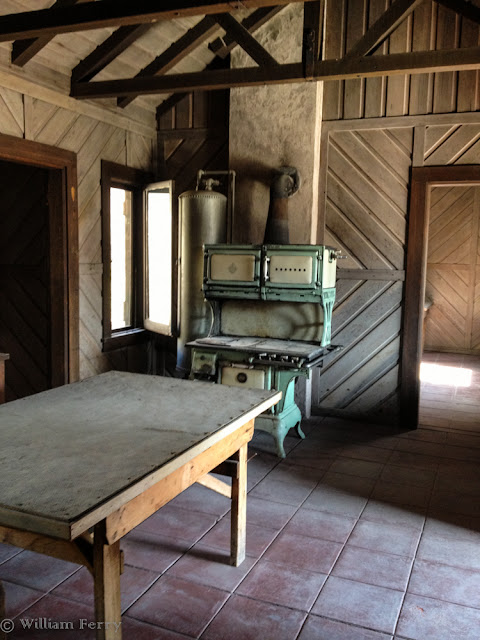Old California
First a part of a large Mexican land grant, the town was founded not long after Alexander Duncan arrived in 1877 to began a sawmill operation. By the 1880s there were two hotels, a saloon, a meat market, blacksmith and livery stables and this general store.
With the lumber mill came the railroad. Duncans Mills became the funnel through which hundreds of thousands of board feet of redwood lumber were loaded aboard trains that followed the hills and creek beds down to waiting ships in San Francisco Bay.
For almost 60 years trains hauled freight (and passengers) to the the terminal in Sausalito. We sure don't think of Sausalito as being a railroad town, as trendy as it is now. The ledger in the foreground recorded the daily flow of rail traffic and the old fashioned phones at left kept the stationmasters in touch with each other and the outside world. It had to be a pretty busy place with three telephones.
Served by the North Pacific Coast Railroad and its unusually colored cabooses, the owners began building a narrow gauge steam line in 1874. It reached Duncans Mills not long after the mill opened. In 1902 new owners, at what must have been at great expense, transformed the track to standard gauge and installed powerlines to serve new electric engines. Redwood lumber remained the dominant item of freight. Since shutting down in in the 1930s, all of the right-of-way eventually became abandoned. The line stretched 93 miles to the Bay - what a wonderfully scenic journey it must have been as a passenger.












































